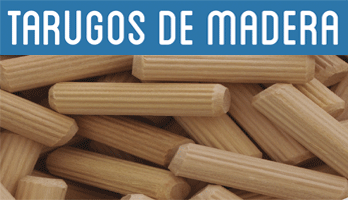
What if wood soon replaced concrete to achieve a more sustainable construction?
American researchers have managed to strengthen wood by injected minerals at a nanometric scale, without altering their mechanical properties. American researchers have developed a technique to strengthen wood by adding minerals on a very small scale, which could allow to use wood instead of steel and concrete in the construction industry.
Strengthening of wood at nanometric scale Investigators of the Atlantic University of Florida have tried to develop a method to strengthen wood by injected with minerals on a nanometric scale. According to the results of his research, recently published in ACS Appliad Materials and Interfaces, a particular treatment seems to be very effective. For this study, scientists focused on red oak, a common hard wood in North America, belonging to the category of timber woods, that is, wood with large ring -shaped vessels used to transport and spread water inside the tree. Red, without altering the global mechanical properties that confer their advantages to wood, that is, without making it heavier, less flexible and without being harmful to the environment. They finally achieved the desired result by introducing a mineral called ferrihydrite into the wood on a nanometric scale. This mineral, obtained through a simple chemical reaction between ferric nitrate and potassium hydroxide, is an iron oxide that is frequently found in nature. Why does such an experiment of this type? To check the veracity of their study, researchers used high precision tools to analyze the effects of ferriidrite treatment at different scales. Through atomic force microscopy and a method called AM-FM, scientists were able to observe the cell walls of the red oaks treated to measure the properties of the wood finally obtained, such as its rigidity and elasticity. Using an electronic scanning microscope, the researchers could also evaluate the response of the wood to localized forces before comparing the results obtained with the results obtained. This multiscalar approach has allowed us to understand how this treatment, apparently quite simple, modifies both the internal structure of wood and its global resistance. In this form, the method used demonstrates that it is possible to reinforce natural materials such as wood without the need to use highly polluting chemical treatments. When this material is reinforced, it could partially replace steel or concrete, materials whose production has an important impact on the environment. Sustainable construction is a great challenge of our time, and wood is now considered one of the main sources of renewable materials and has been used by humans since the dawn of the times. However, there are still solutions to find to limit the impacts of its use on deforestation and destruction of ecosystems; It would really be counterproductive to partially solve an environmental problem just to aggravate another.
IT MAY INTEREST YOU
 Color the streets pink and white in spring: which is the most beautiful tree in the world and why, according to AI
Color the streets pink and white in spring: which is the most beautiful tree in the world and why, according to AI
Its delicate branches, the soft tones of its petals and the harmonious shape of the tree make it an almost poetic image.
 Nation reinforces prevention and training against forest fires
Nation reinforces prevention and training against forest fires
The director of the Federal Emergency Agency (AFE), Santiago Hardie, referred to the support that the Nation provides in fighting fires. He argued that the majority of igneous sources respond to human interventions and that, therefore, social awareness is a central tool to reduce environmental, material and human damage.
 Reforestation advances in the Historic Sanctuary of Machu Picchu with new restored hectares
Reforestation advances in the Historic Sanctuary of Machu Picchu with new restored hectares
The plan includes the planting of a thousand new trees in the sanctuary, in response to the damage caused by forest fires and environmental threats, with the support of local authorities and representatives of the tourism sector.





















